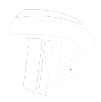Polypropylene resin is one of the four general thermoplastic resins (polyethylene, polyvinyl chloride, polypropylene, polystyrene). It is produced by polymerization with propylene as raw material and ethylene as comonomer.
The production process of polypropylene mainly experienced several development stages, such as solvent method, solution method, liquid-phase bulk method (including liquid-phase gas-phase combination) and gas-phase method. In the world, the process methods used to produce polypropylene are divided into the following categories: solvent method, solution method, liquid-phase bulk method (including liquid-phase gas-phase combination) and gas-phase method. The process features are as follows:
Solvent polymerization
Solvent method (also known as slurry method or slurry method, slurry method) is the earliest used polypropylene production process. However, due to the disadvantages of deashing and solvent recovery process, long process and complexity, with the progress of catalyst research technology, since the 1980s, solvent method has been stagnant and gradually replaced by liquid-phase bulk method.
Process features: (1) propylene monomer dissolves in inert liquid-phase solvent (such as hexane), polymerizes in solvent under the action of catalyst, and the polymer is suspended in the solvent in the state of solid particle transportation, using a kettle type agitated reactor; (2) there are deashing and solvent recovery processes, with long process, more complex, large investment and high energy consumption. However, the production is easy to control and the product quality is good. (3) polypropylene particles are separated by centrifugal filtration and then dried by air flow boiling and extruded.



